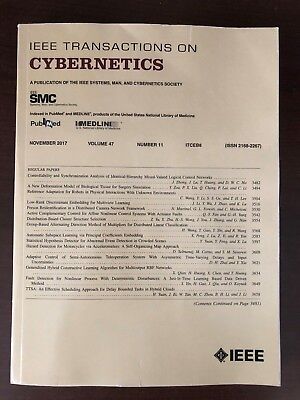Structure Learning of Deep Gaussian and Non-Gaussian Information Fusion Framework for Automated Predictive Data Analytics.
IF 10.5
1区 计算机科学
Q1 AUTOMATION & CONTROL SYSTEMS
引用次数: 0
Abstract
To combine the strengths of Gaussian and non-Gaussian latent variable models, a novel information fusion strategy has recently been proposed under the deep learning framework. Although promising results have been obtained, the critical structure learning problem remains unsolved, which seriously hinders the automation of data-driven modeling and analytics. In this article, the maximal information coefficient (MIC) method is introduced as a measurement of the AS between two latent variables, which has no restriction in the type of data distribution. Through an assessment on the necessity of adding a new hidden layer into the deep model in each step, an evaluation index is defined for automatic determination of the required hidden layers during the model training process. For time-varying industrial production environments, reconfiguration or updating of the model structure is frequently required. In this case, automated data-driven modeling and structure learning can significantly improve the efficiency of data analytics. Based on the study results obtained from two real industrial examples, the proposed structure learning algorithm is feasible, and the automated data analytics scheme has significantly improved the online prediction performance in time-varying industrial processes.面向自动化预测数据分析的深度高斯和非高斯信息融合框架的结构学习。
为了结合高斯和非高斯潜变量模型的优点,在深度学习框架下提出了一种新的信息融合策略。虽然已经取得了可喜的成果,但关键结构学习问题仍然没有得到解决,这严重阻碍了数据驱动建模和分析的自动化。本文引入了最大信息系数法(MIC)来测量两个潜在变量之间的as,该方法不受数据分布类型的限制。通过评估每一步在深度模型中添加新隐藏层的必要性,定义一个评估指标,用于自动确定模型训练过程中所需的隐藏层。对于时变的工业生产环境,经常需要对模型结构进行重新配置或更新。在这种情况下,自动化的数据驱动建模和结构学习可以显著提高数据分析的效率。基于两个实际工业实例的研究结果表明,所提出的结构学习算法是可行的,自动化数据分析方案显著提高了时变工业过程的在线预测性能。
本文章由计算机程序翻译,如有差异,请以英文原文为准。
求助全文
约1分钟内获得全文
求助全文
来源期刊

IEEE Transactions on Cybernetics
COMPUTER SCIENCE, ARTIFICIAL INTELLIGENCE-COMPUTER SCIENCE, CYBERNETICS
CiteScore
25.40
自引率
11.00%
发文量
1869
期刊介绍:
The scope of the IEEE Transactions on Cybernetics includes computational approaches to the field of cybernetics. Specifically, the transactions welcomes papers on communication and control across machines or machine, human, and organizations. The scope includes such areas as computational intelligence, computer vision, neural networks, genetic algorithms, machine learning, fuzzy systems, cognitive systems, decision making, and robotics, to the extent that they contribute to the theme of cybernetics or demonstrate an application of cybernetics principles.
 求助内容:
求助内容: 应助结果提醒方式:
应助结果提醒方式:


